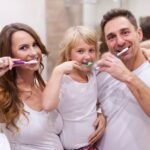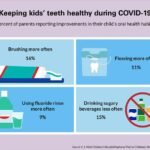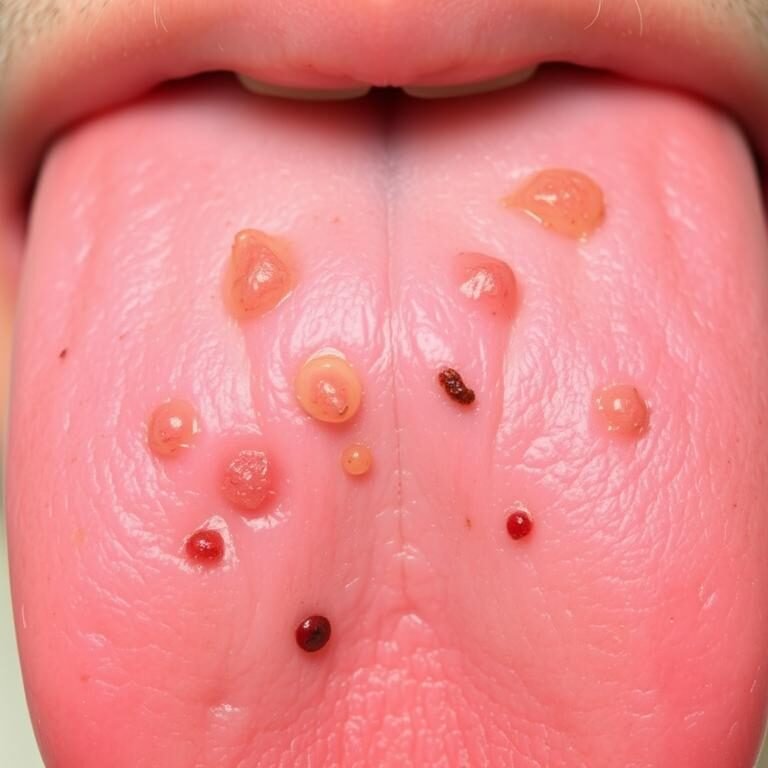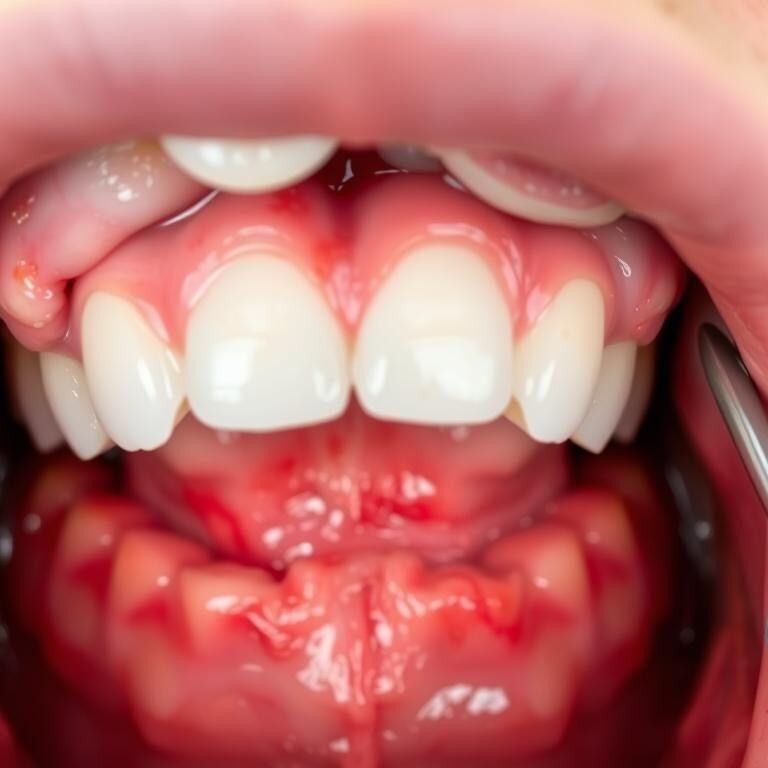Table of Contents
Heading 1: The Importance of Dental Cleanings During the COVID-19 Pandemic
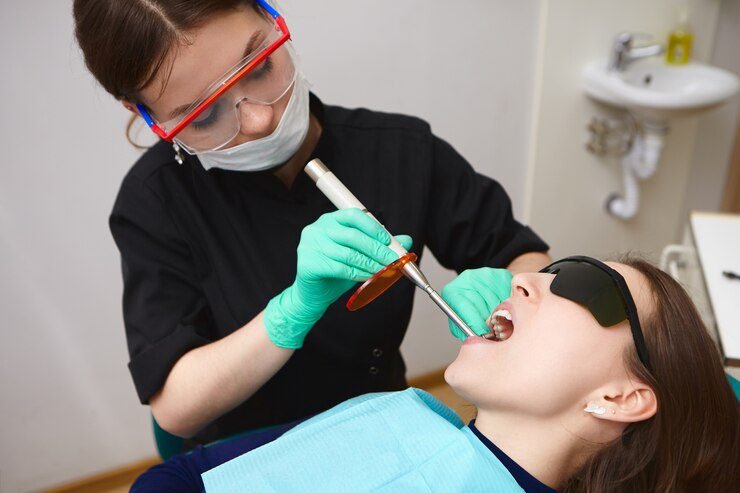
Regular dental cleanings are an essential aspect of maintaining optimal oral health, especially during the COVID-19 pandemic. These cleanings not only help to prevent common dental issues such as cavities and gum disease, but they also play a crucial role in identifying and addressing potential concerns before they escalate. By keeping up with routine dental cleanings, individuals can ensure that their oral health remains in excellent condition, reducing the risk of further complications down the line.
During dental cleanings, dentists or dental hygienists thoroughly remove plaque and tartar build-up from the teeth and gums. This process not only leaves the mouth feeling fresh and clean, but it also helps to prevent the accumulation of harmful bacteria that can contribute to various dental issues. Additionally, regular cleanings allow dental professionals to identify any early signs of cavities, gum disease, or other oral health problems. By addressing these issues in their early stages, individuals can avoid more extensive and costly treatments in the future. Hence, prioritizing dental cleanings is vital to maintaining overall oral health amid the ongoing COVID-19 pandemic.
Heading 2: Understanding the Precautionary Measures Taken by Dental Offices
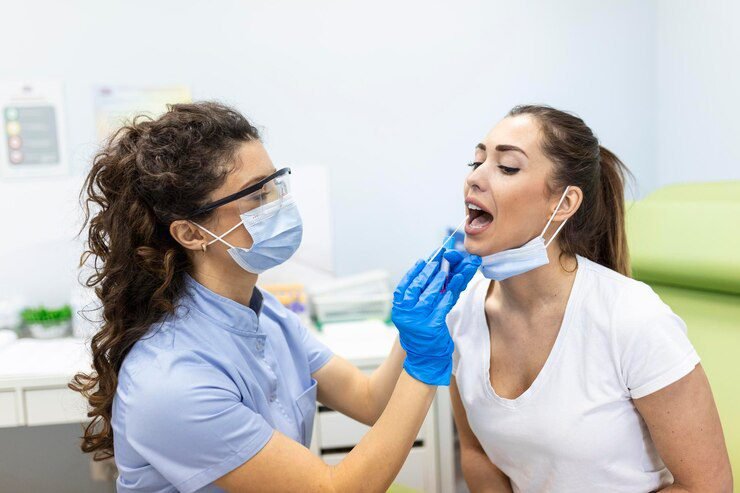
Dental offices have implemented a range of precautionary measures to ensure the safety of their patients and staff during the COVID-19 pandemic. One of the key measures is the use of personal protective equipment (PPE). Dentists and dental hygienists wear masks, face shields, gloves, and gowns to protect themselves and prevent the spread of the virus.
In addition to PPE, dental offices have also been adhering to strict sanitization protocols. All surfaces, equipment, and instruments are thoroughly cleaned and disinfected between each patient. Special attention is given to high-touch areas such as doorknobs, countertops, and dental chairs. This level of sanitization helps minimize the risk of virus transmission and ensures a clean and safe environment for patients.
Heading 3: How Dental Offices are Adhering to Strict Sanitization Protocols

In response to the COVID-19 pandemic, dental offices have implemented strict sanitization protocols to ensure the safety and well-being of both patients and staff. Adhering to these protocols is crucial in minimizing the risk of virus transmission within the dental setting.
One key measure being taken is the thorough cleaning and disinfection of treatment areas between patients. This includes not only the dental chair and instruments but also commonly touched surfaces such as doorknobs, light switches, and countertops. High-quality disinfectants that are effective against the coronavirus are being used, and specific protocols are followed to ensure the proper application and contact time. By implementing these rigorous sanitization practices, dental offices are creating a cleaner and safer environment for everyone involved.
Additionally, the use of personal protective equipment (PPE) is a critical aspect of maintaining strict sanitization protocols. Dental professionals are wearing various forms of PPE, including face masks, gloves, and face shields or goggles. These protective measures act as barriers against potential viral exposure and help to prevent the spread of infectious droplets. Regular training and education on proper donning and doffing techniques for PPE are also being provided to ensure optimal protection. By prioritizing the use of PPE, dental offices are further enhancing their commitment to maintaining a sanitized environment and preserving the health and safety of both patients and dental personnel.
Heading 4: The Use of Personal Protective Equipment (PPE) in Dental Offices
In order to prioritize the safety of both patients and dental staff, the use of personal protective equipment (PPE) in dental offices has become crucial during the COVID-19 pandemic. PPE includes various specialized equipment and garments that are designed to provide a barrier between the wearer and potential sources of infection. Dental professionals, such as dentists, dental hygienists, and dental assistants, are required to wear PPE to minimize the risk of virus transmission.
Among the essential PPE items used in dental offices are face masks, gloves, gowns, and protective eyewear. Face masks play a critical role in preventing the spread of respiratory droplets that may contain the virus, as they cover the mouth and nose. Dental professionals typically utilize surgical masks or N95 respirators, depending on the nature of the dental procedure being performed. Gloves serve as a protective barrier for both patients and dental staff, preventing direct contact with bodily fluids and potential pathogens. Gowns and protective eyewear provide additional protection by shielding the body and eyes from contamination. By employing appropriate PPE, dental offices ensure a safer environment for both dental professionals and patients alike.
Heading 5: Appointment Scheduling and Waiting Room Procedures
When it comes to scheduling and managing appointments in dental offices during the COVID-19 pandemic, careful consideration is given to ensure the safety and well-being of both patients and staff. Dental offices are implementing various procedures to minimize the number of people in waiting rooms and maintain social distancing protocols.
One common practice is staggering appointments to reduce the number of patients present in the waiting area at any given time. This helps to prevent overcrowding and allows for ample space between individuals. Additionally, some dental offices are utilizing virtual check-ins or text notifications to minimize the time patients spend in the waiting room. These measures not only enhance safety but also improve efficiency and reduce wait times for patients.
Furthermore, waiting room procedures have been adjusted to comply with infection control guidelines. In many dental offices, seating arrangements have been modified to maintain social distancing. Patients may be asked to wait in their cars until their appointment time and then be called in when the treatment room is ready. Hand sanitizing stations are also readily available in waiting areas to promote proper hand hygiene. By implementing these practices, dental offices strive to create a safe and comfortable environment for patients while prioritizing their oral health needs.
Here’s a guide on appointment scheduling and waiting room procedures for dental clinics:
| Appointment Scheduling and Waiting Room Procedures | Guidelines |
|---|---|
| 1. Efficient Appointment Scheduling | – Implement a systematic appointment scheduling system to manage patient flow and minimize wait times. |
| – Use scheduling software or electronic systems to book appointments, allocate sufficient time for each patient, and avoid overbooking. | |
| 2. Reminders and Confirmation | – Send appointment reminders via email, text message, or phone call to confirm appointments and reduce no-shows. |
| – Provide patients with clear instructions regarding appointment dates, times, and any pre-visit requirements. | |
| 3. Pre-screening and Health Questionnaires | – Conduct pre-appointment screenings to assess patients for COVID-19 symptoms, exposure risk, and recent travel history. |
| – Ask patients to complete health questionnaires online or over the phone before their appointment to expedite check-in and reduce waiting room time. | |
| 4. Staggered Appointments | – Stagger appointment times to minimize the number of patients in the waiting room and maintain social distancing. |
| – Schedule follow-up appointments or consultations during off-peak hours to reduce congestion in the waiting area. | |
| 5. Virtual Waiting Rooms | – Implement virtual waiting rooms where patients can check-in remotely and wait in their cars until called into the clinic. |
| – Use mobile apps or text notifications to alert patients when it’s their turn for treatment, reducing time spent in the waiting room. | |
| 6. Limited Accompanying Individuals | – Limit the number of accompanying individuals allowed in the waiting room to reduce crowding and maintain social distancing. |
| – Encourage patients to attend appointments alone whenever possible or limit accompanying individuals to one caregiver for minors or patients with special needs. | |
| 7. Social Distancing Measures | – Arrange waiting room seating to ensure at least six feet of distance between individuals or households. |
| – Remove unnecessary furniture, magazines, toys, and other high-touch items from the waiting area to minimize transmission risks. | |
| 8. Hand Hygiene Stations | – Place hand hygiene stations equipped with alcohol-based hand sanitizer or handwashing facilities at the entrance and throughout the clinic. |
| – Encourage patients to sanitize their hands upon entering the clinic and before touching any surfaces or objects. | |
| 9. Enhanced Cleaning and Disinfection | – Implement rigorous cleaning and disinfection protocols for waiting room surfaces, chairs, doorknobs, and other high-touch areas. |
| – Use EPA-approved disinfectants effective against SARS-CoV-2 and follow manufacturer guidelines for proper use and contact times. | |
| 10. Clear Communication and Signage | – Display clear signage throughout the clinic to inform patients of social distancing guidelines, hand hygiene practices, and mask requirements. |
| – Communicate any changes to appointment procedures or clinic policies via email, website updates, or social media channels. |
Heading 6: The Role of Screening and Temperature Checks
Screening and temperature checks play a crucial role in ensuring the safety of both patients and staff in dental offices during the COVID-19 pandemic. Before entering the dental office, patients are required to undergo screening, which involves a series of questions about their health and any potential COVID-19 symptoms. This screening process helps identify patients who may be at risk of transmitting the virus and allows appropriate measures to be taken.
In addition to screening, temperature checks are also conducted as part of the pre-appointment protocol. Elevated body temperature is one of the common symptoms of COVID-19. By measuring the temperature of patients upon arrival, dental offices can quickly identify individuals who may have a fever, which could be indicative of an infection. This precautionary measure enhances the safety of the dental environment by promptly identifying potentially infectious individuals and preventing the transmission of the virus within the office setting. By implementing these screening and temperature checks, dental offices are taking proactive steps to protect the health and well-being of their patients and staff.
Heading 7: Minimizing Aerosol Generating Procedures
Minimizing aerosol generating procedures is crucial in dental offices during the COVID-19 pandemic to reduce the risk of virus transmission. Aerosols are tiny particles that can remain suspended in the air for an extended period, potentially carrying pathogens like the SARS-CoV-2 virus. Dental procedures such as drilling, ultrasonic scaling, and air polishing can generate aerosols, increasing the risk of viral spread.
To minimize aerosol generation, dental offices have implemented various measures. One approach is to modify treatment protocols by using hand instruments instead of high-speed drills whenever possible. Hand scaling and manual tooth polishing can effectively clean teeth without creating aerosols. Additionally, dental teams have been encouraged to use rubber dams during procedures to isolate the treatment area and prevent saliva and aerosols from spreading.
In cases where aerosol generating procedures are necessary, dental offices have taken additional precautions. They utilize high-volume evacuation (HVE) systems to capture and remove aerosols at the source. These HVE devices are designed to minimize the dispersion of aerosols and contaminants in the environment, safeguarding both patients and dental professionals. Moreover, using pre-procedural mouth rinses containing hydrogen peroxide or povidone-iodine has been recommended to reduce the viral load in the oral cavity and minimize the risk of aerosol transmission.
By implementing these measures, dental offices are prioritizing patient safety and reducing the risk of COVID-19 transmission during aerosol generating procedures. However, it is essential to note that each dental office may have specific protocols in place, so it is advisable to check with your dentist regarding the specific measures they have implemented to minimize aerosols during dental procedures.
Heading 8: Enhanced Air Filtration Systems in Dental Offices
Enhanced air filtration systems play a crucial role in maintaining a safe and healthy environment in dental offices during the COVID-19 pandemic. These advanced systems are designed to remove airborne particles, including viruses and bacteria, from the air, helping to minimize the risk of transmission. By employing high-efficiency particulate air (HEPA) filters, dental offices can effectively trap and eliminate contaminants, ensuring cleaner and purer air for both dental staff and patients.
HEPA filters are highly efficient at capturing tiny particles as small as 0.3 microns, including respiratory droplets that may contain the virus responsible for COVID-19. This filtration technology helps to reduce the concentration of potentially infectious aerosols in the dental office, making it a critical tool in preventing the spread of the virus. With enhanced air filtration systems in place, dental offices can provide a safer environment for dental procedures and alleviate concerns about indoor air quality. As the dental community continues to prioritize patient safety, implementing these advanced filtration systems is just one of the many precautionary measures being taken to protect patients and staff from COVID-19 transmission.
Heading 9: The Importance of Social Distancing in Dental Offices
In the wake of the COVID-19 pandemic, social distancing has emerged as a crucial practice in preventing the spread of the virus. Dental offices have taken this responsibility seriously and have implemented strict measures to ensure the safety of both patients and staff. Social distancing measures in dental offices are aimed at reducing close contact and maintaining a safe distance between individuals.
One way dental offices are promoting social distancing is by limiting the number of patients in the waiting area. By spacing out appointments and reducing overcrowding, patients have more room to maintain a safe distance from each other. Some offices have also implemented virtual waiting rooms, where patients can check-in from their cars and wait until it is their turn to be seen.
Inside the dental office, seating areas are arranged to adhere to the recommended six-foot distance between individuals. Additionally, floor markers and signage are placed strategically to remind everyone to maintain proper social distance. In some cases, offices have also reconfigured their reception desks and checkout areas to create physical barriers, further minimizing close contact.
By prioritizing social distancing measures, dental offices are demonstrating their commitment to patient safety during these challenging times. The implementation of these protocols not only protects patients and staff but also ensures that dental care can continue to be delivered in a safe and responsible manner.
Heading 10: How Dental Offices are Promoting Hand Hygiene
Hand hygiene is a crucial aspect of maintaining a safe and healthy environment in dental offices, especially during the ongoing COVID-19 pandemic. Dental offices are taking proactive measures to promote effective hand hygiene among patients and staff members. Frequent hand washing with soap and water for at least 20 seconds is strongly encouraged before and after appointments. Dental offices are also making alcohol-based hand sanitizers readily available in all areas for convenient and quick hand disinfection. These measures not only help prevent the spread of COVID-19 but also reduce the risk of other infections commonly associated with dental settings.
In addition to providing hand sanitizers, dental offices are implementing educational initiatives to raise awareness about proper hand hygiene. Posters, pamphlets, and digital displays are strategically placed in waiting rooms and treatment areas, highlighting the importance of handwashing and proper techniques. These resources outline step-by-step instructions on how to effectively clean hands, emphasizing key areas such as palms, backs of hands, fingers, and under the nails. By reinforcing the importance of hand hygiene through visual aids, dental offices aim to empower patients and staff members to prioritize this essential practice for their safety and well-being.
Heading 11: The Benefits of Regular Dental Cleanings for Overall Health
Regular dental cleanings play a crucial role in maintaining overall health. Beyond the aesthetic benefits of a clean and bright smile, dental cleanings offer numerous health advantages. By removing plaque and tartar buildup, dental cleanings help prevent gum disease, which has been linked to various systemic conditions, including heart disease, diabetes, and stroke. Additionally, regular cleanings allow dentists to detect early signs of oral health issues, such as cavities or gum disease, before they develop into more serious problems.
Furthermore, dental cleanings contribute to better oral hygiene habits. When patients receive regular cleanings, dental hygienists provide valuable education and guidance on proper oral care techniques, including brushing, flossing, and mouth rinsing. This education empowers individuals to maintain good dental habits at home, leading to reduced plaque accumulation and a lower risk of dental issues in the future. In addition, dental cleanings often include a thorough examination of the mouth, allowing the dentist to identify any abnormalities or changes that may require further investigation or treatment. Overall, regular dental cleanings lay the foundation for a healthy mouth and contribute to better overall health.
Heading 12: Addressing Concerns About COVID-19 Transmission in Dental Offices
Addressing concerns about COVID-19 transmission in dental offices is a top priority for both patients and dental professionals alike. It is completely normal to have apprehensions and questions about visiting the dentist during these uncertain times. However, it is important to understand that dental offices have implemented a variety of measures to ensure the safety of their patients and staff.
Firstly, dental offices have enhanced their already stringent infection control protocols to align with the guidelines provided by reputable health organizations such as the Centers for Disease Control and Prevention (CDC) and the World Health Organization (WHO). These guidelines encompass a variety of measures, including increased sanitization of surfaces, equipment, and common areas, as well as the use of appropriate personal protective equipment (PPE) by dental personnel.
Secondly, dental offices are implementing additional precautions to minimize close contact and reduce the risk of exposure to COVID-19. This includes implementing appointment scheduling and waiting room procedures that facilitate social distancing, such as spacing out patient appointments and limiting the number of individuals in the waiting area. Dental offices are also conducting screening and temperature checks for patients and staff upon arrival to identify any potential symptoms or risk factors.
By addressing concerns head-on and implementing strict safety measures, dental offices are committed to providing a safe environment for patients to receive essential oral healthcare. It is important to stay informed and follow the guidance provided by dental professionals to ensure the well-being of both patients and dental staff during these challenging times.
Heading 13: The Dental Community’s Commitment to Patient Safety During COVID-19
The dental community has demonstrated an unwavering commitment to patient safety during the COVID-19 pandemic. Dentists and dental offices have implemented stringent measures to ensure the well-being of their patients as they continue to provide essential oral care.
One of the key ways in which dental professionals have shown their dedication to safety is through the rigorous adherence to strict sanitization protocols. Dental offices have always maintained high standards of cleanliness, but these protocols have been amplified to combat the spread of the virus. From thorough disinfection of surfaces to the use of medical-grade sanitizers, dental offices are leaving no stone unturned when it comes to providing a safe environment for patients. Additionally, many offices have enhanced their air filtration systems to ensure a continuous flow of clean and fresh air throughout the facility. These measures not only protect patients but also instill confidence in them that their well-being is of the utmost importance.
By prioritizing patient safety, the dental community has displayed its unwavering commitment to maintaining high standards of care. Dentists and their teams have worked tirelessly to implement precautionary measures and adapt their practices to ensure that patients can receive the dental treatments they need without compromising their health. With such dedication to safety, dental offices have become a beacon of trust and reassurance for patients during these challenging times.
Are dental cleanings still important during the COVID-19 pandemic?
Yes, dental cleanings are still important during the COVID-19 pandemic. They help maintain oral health, prevent dental issues, and can contribute to overall health.
What precautionary measures are dental offices taking to ensure patient safety?
Dental offices are taking various precautionary measures, such as strict sanitization protocols, the use of personal protective equipment (PPE), appointment scheduling and waiting room procedures, screening and temperature checks, minimizing aerosol generating procedures, enhanced air filtration systems, promoting social distancing, and emphasizing hand hygiene.
How are dental offices adhering to strict sanitization protocols?
Dental offices are following rigorous sanitization protocols by regularly cleaning and disinfecting all surfaces and equipment, using medical-grade disinfectants, and implementing additional sterilization measures for instruments.
What is the role of personal protective equipment (PPE) in dental offices?
Personal protective equipment, such as masks, gloves, and face shields, is worn by dental staff to minimize the risk of transmission and protect both patients and providers from potential infections.
How are dental offices managing appointment scheduling and waiting room procedures?
Dental offices are implementing strategies to reduce overcrowding in waiting rooms, such as spacing out appointments, utilizing virtual waiting rooms, and implementing check-in protocols to minimize contact and maintain social distancing.
Are dental offices conducting screening and temperature checks?
Yes, dental offices are conducting screening and temperature checks for all patients and staff upon arrival to detect any potential symptoms or signs of illness.
How are dental offices minimizing aerosol generating procedures?
Dental offices are implementing measures to minimize aerosol generating procedures, such as using high-volume suction devices, rubber dams, and alternative techniques that reduce the production of aerosols.
Do dental offices have enhanced air filtration systems?
Yes, many dental offices have enhanced air filtration systems in place to improve air quality and reduce the potential transmission of airborne particles.
How are dental offices promoting social distancing?
Dental offices are rearranging waiting areas, setting up physical barriers, and implementing floor markings to maintain appropriate social distancing between patients and staff.
How are dental offices promoting hand hygiene?
Dental offices are providing hand sanitizers, placing hand hygiene reminders in visible areas, and ensuring that all staff and patients have access to handwashing facilities with soap and water.
Are regular dental cleanings beneficial for overall health?
Yes, regular dental cleanings are beneficial for overall health as they can help prevent gum disease, tooth decay, and other oral health issues that can contribute to systemic health problems.
What steps are dental offices taking to address concerns about COVID-19 transmission?
Dental offices are actively addressing concerns by implementing strict safety protocols, following guidelines from health authorities, providing clear communication to patients about safety measures, and addressing any specific concerns or questions raised by patients.
How committed is the dental community to patient safety during COVID-19?
The dental community is highly committed to patient safety during COVID-19. Dental professionals are taking every precaution possible to ensure the well-being and safety of their patients, following strict protocols, and staying updated with the latest guidelines and recommendations from health authorities.




